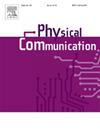分数阶深度神经网络改进无线传感器网络TDOA定位
IF 2.2
4区 计算机科学
Q3 ENGINEERING, ELECTRICAL & ELECTRONIC
引用次数: 0
摘要
准确定位对于无线传感器网络的有效运行至关重要,但传统的定位方法经常受到噪声和环境变化的影响。本研究引入了一种将分数阶微积分引入深度神经网络(DNN)的新方法,以解决两个关键的技术挑战:(1)到达时间差(TDOA)方法在动态环境中对噪声和非线性的敏感性;(2)传统梯度下降方法在DNN训练中的局限性,如梯度消失和缓慢收敛。所提出的分数阶(FODNNs)利用分数阶导数(nwald - letnikov定义)的记忆效应和非局部特性来增强梯度计算和反向传播过程中的误差传播。实验结果表明,FODNNs将定位误差降低了50%(平均误差为0.21±0.03 m,而DNNs的平均误差为0.42±0.07 m),收敛速度提高了44.4%(50±3次epoch比90±5次epoch),即使在高噪声条件下(信噪比<;10 dB)。该框架还显示出优越的鲁棒性,在噪声下仅下降12.3%,而dnn的性能下降38.7%。本文章由计算机程序翻译,如有差异,请以英文原文为准。
Fractional-order Deep Neural Networks for Improved TDOA Localization in Wireless Sensor Networks
Accurate localization is critical for the effective operation of Wireless Sensor Networks (WSNs), yet traditional methods often struggle with noise and environmental variability. This research introduces a novel approach by incorporating fractional-order calculus into Deep Neural Networks (DNNs) to address two key technical challenges: (1) the sensitivity of Time-Difference-of-Arrival (TDOA) methods to noise and non-linearity in dynamic environments, and (2) the limitations of conventional gradient descent in DNN training, such as vanishing gradients and slow convergence. The proposed Fractional-Order (FODNNs) leverage the memory effects and non-local properties of fractional derivatives Grünwald–Letnikov definition) to enhance gradient computation and error propagation during backpropagation. Experimental results demonstrate that FODNNs reduce localization error by 50% (achieving a mean error of 0.21 ± 0.03 m vs. 0.42 ± 0.07 m for DNNs and converge 44.4% faster ( epochs vs. epochs), while maintaining sub-0.25 m accuracy even in high-noise conditions (SNR 10 dB). The framework also shows superior robustness, with only 12.3% performance degradation under noise compared to 38.7% for DNNs.
求助全文
通过发布文献求助,成功后即可免费获取论文全文。
去求助
来源期刊

Physical Communication
ENGINEERING, ELECTRICAL & ELECTRONICTELECO-TELECOMMUNICATIONS
CiteScore
5.00
自引率
9.10%
发文量
212
审稿时长
55 days
期刊介绍:
PHYCOM: Physical Communication is an international and archival journal providing complete coverage of all topics of interest to those involved in all aspects of physical layer communications. Theoretical research contributions presenting new techniques, concepts or analyses, applied contributions reporting on experiences and experiments, and tutorials are published.
Topics of interest include but are not limited to:
Physical layer issues of Wireless Local Area Networks, WiMAX, Wireless Mesh Networks, Sensor and Ad Hoc Networks, PCS Systems; Radio access protocols and algorithms for the physical layer; Spread Spectrum Communications; Channel Modeling; Detection and Estimation; Modulation and Coding; Multiplexing and Carrier Techniques; Broadband Wireless Communications; Wireless Personal Communications; Multi-user Detection; Signal Separation and Interference rejection: Multimedia Communications over Wireless; DSP Applications to Wireless Systems; Experimental and Prototype Results; Multiple Access Techniques; Space-time Processing; Synchronization Techniques; Error Control Techniques; Cryptography; Software Radios; Tracking; Resource Allocation and Inference Management; Multi-rate and Multi-carrier Communications; Cross layer Design and Optimization; Propagation and Channel Characterization; OFDM Systems; MIMO Systems; Ultra-Wideband Communications; Cognitive Radio System Architectures; Platforms and Hardware Implementations for the Support of Cognitive, Radio Systems; Cognitive Radio Resource Management and Dynamic Spectrum Sharing.
 求助内容:
求助内容: 应助结果提醒方式:
应助结果提醒方式:


